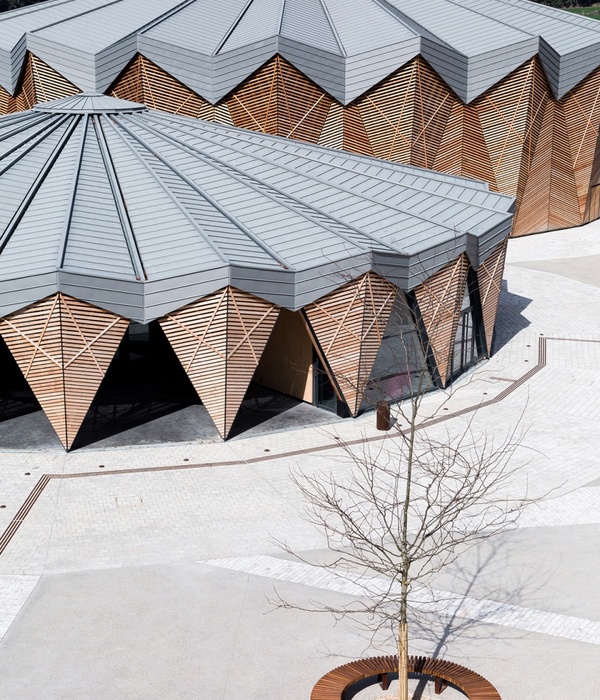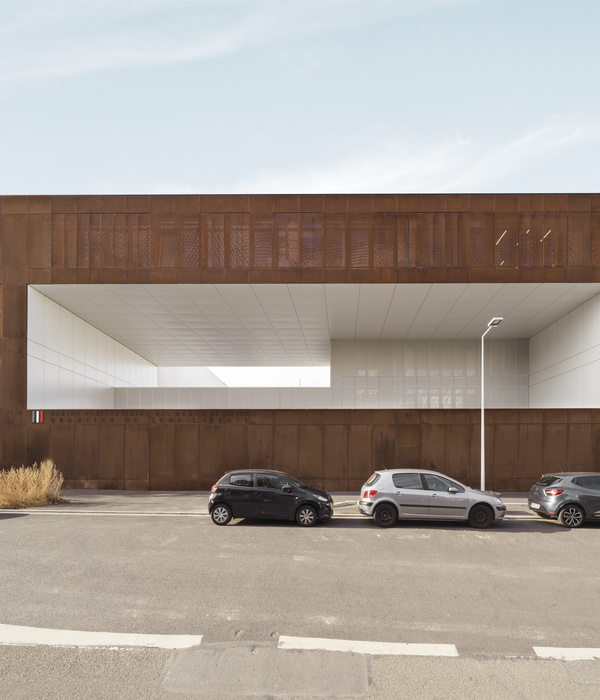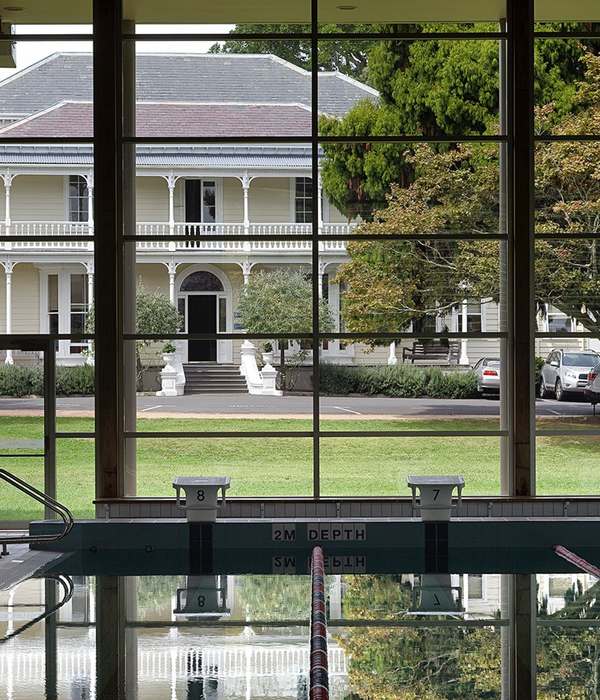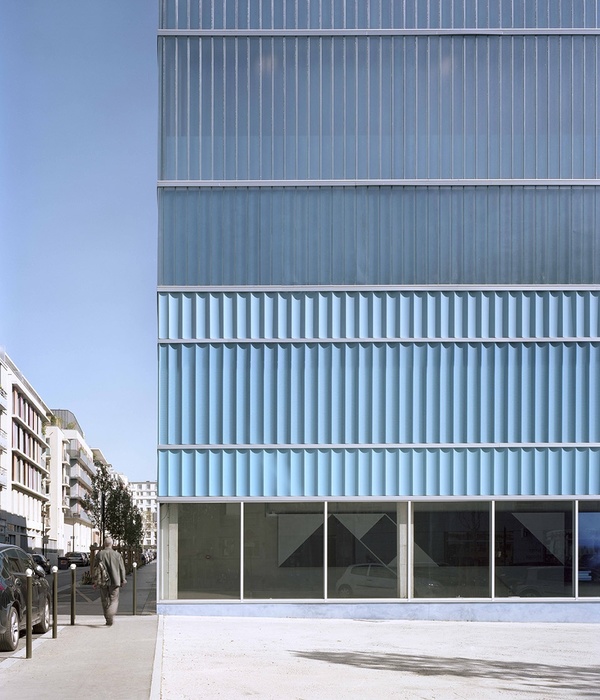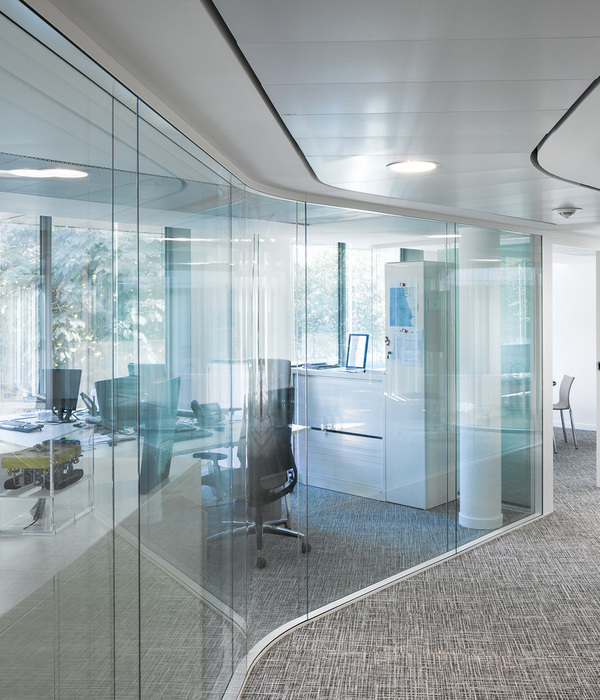Courtesy of Anmahian Winton Architects
Anmahian Winton建筑公司提供的服务
架构师提供的文本描述。这个私人天文台位于新罕布什尔州中部一座偏僻的山顶上。该遗址的特征是花岗岩露头,位于半径三英里半径“黑暗”景观的中心,光污染很小,不妨碍天文观测。
Text description provided by the architects. This private astronomical observatory is located on a remote mountain summit in central New Hampshire. The site is characterized by granite outcroppings and is situated at the center of a three-mile radius “dark” landscape with very little light pollution to obstruct astronomical viewing.
Axonometric
杰玛的设计摒弃了传统的穹顶,而是采用了一种综合建筑形式,最大限度地利用了可用空间,并对严酷的地理环境做出了反应。它的连续面的形状反映了周围的地形,梯田混凝土平台之间的山顶基岩和建筑基础之间的过渡,编织在一起的自然和人为景观。一种非常规的锁缝锌包层模式介于不规则的场地地形和建筑物的几何图形之间,反映了伽玛对地质和天体地标的定位。它的尺寸、颜色和云母与灰色花岗岩露头有物质关系,而其传热能力则通过将温差畸变降到最低,方便了天空观测。
Gemma’s design rejects a traditional dome in favor of a synthesized architectural form that maximizes usable space and responds to the stark geographic context. Its continuously faceted shape reflects the surrounding landform, and terraced concrete platforms transition between the summit’s bedrock and the building foundation, knitting together natural and man-made landscapes. An unconventional pattern of lock-seamed zinc cladding mediates between the irregular site topography and the building’s geometry, reflecting Gemma’s orientation to both geological and celestial landmarks. Its dimension, color, and patina evoke a material relationship to the gray granite outcroppings, while its heat transfer capability facilitates sky observation by minimizing temperature differential distortion.
Courtesy of Anmahian Winton Architects
Anmahian Winton建筑公司提供的服务
Courtesy of Anmahian Winton Architects
Anmahian Winton建筑公司提供的服务
作为对立面的外部和它的背景,内部是与冷杉胶合板,创造了一个避风港的庇护和温暖从严酷的环境。一楼由一个研究办公室、睡床和暖房组成,并且是超绝缘的,以防止内部/外部温差产生热量漩涡,从而阻碍天文观测。螺旋楼梯从悬臂式进入天篷引向包层中的一个裂缝,该裂缝打开到外部观察甲板上。继续,楼梯到达天文台的主要观察平台内的分面炮塔,其内部特点是高天花板,一个更大的望远镜,和一个相机阵列。一个人可以用一个通常用于高精度制造设施的组件手动旋转这个炮塔,而一个手伸的滑动舱口将望远镜打开到天空。锌包层上的裂痕创造了一个角窗,当炮塔锁定在南红柱位置时,形成了北极星。
As a counterpoint to the exterior and its context, the interior is lined with fir plywood, creating a haven of refuge and warmth from the harsh surroundings. The first floor is comprised of a research office, sleeping bunk, and warming room, and is super-insulated to prevent interior/exterior temperature differentials from creating heat eddies that would impede astronomical viewing. A helical stair leads from the cantilevered entry canopy to a fissure in the cladding that opens onto the exterior observation deck. Continuing, the stair arrives at the observatory’s primary viewing platform inside the faceted turret, its interior characterized by high ceilings, a larger telescope, and a camera array. A single person can rotate this turret by hand with an assembly typically used in high-precision manufacturing facilities, and a hand-cranked sliding hatch opens the telescope to the sky. A rift in the zinc cladding creates a corner window, framing Polaris when the turret is locked into the southern cardinal position.
Courtesy of Anmahian Winton Architects
Anmahian Winton建筑公司提供的服务
Architects Anmahian Winton Architects
Location New Hampshire, United States
Anmahian Winton Architects Alex Anmahian AIA, Nick Winton AIA
Project Manager Mazen Sakr
Team Anika Gramsey, Travis Williams
Area 2130.0 ft2
Project Year 2015
Category Planetarium
Manufacturers Loading...
{{item.text_origin}}






